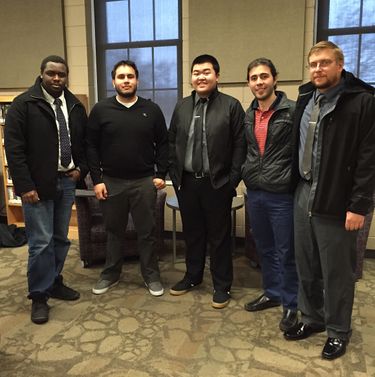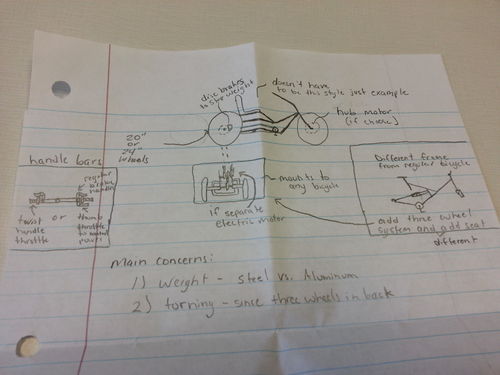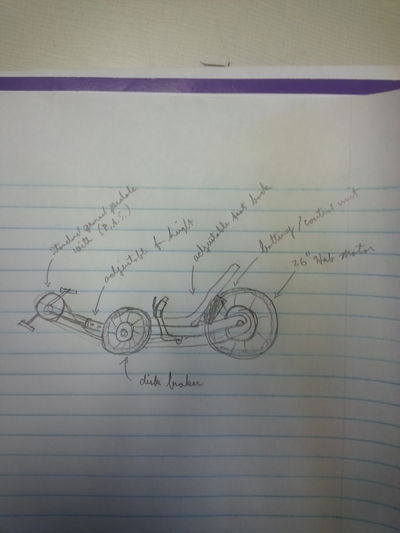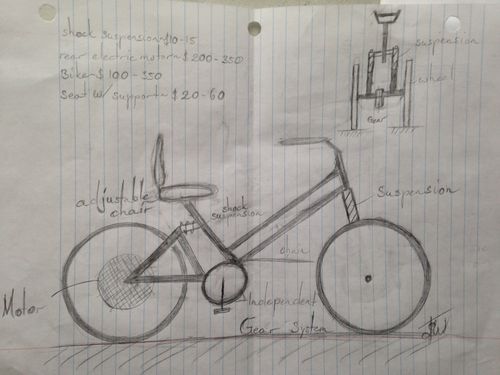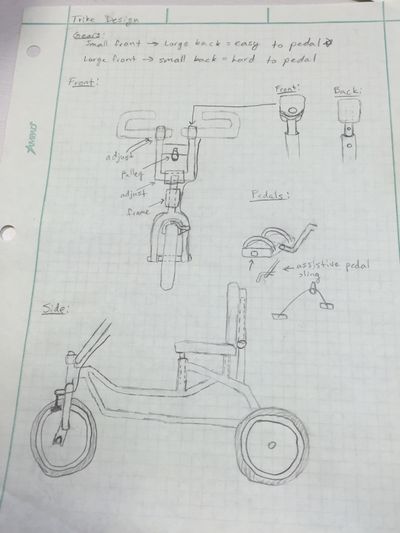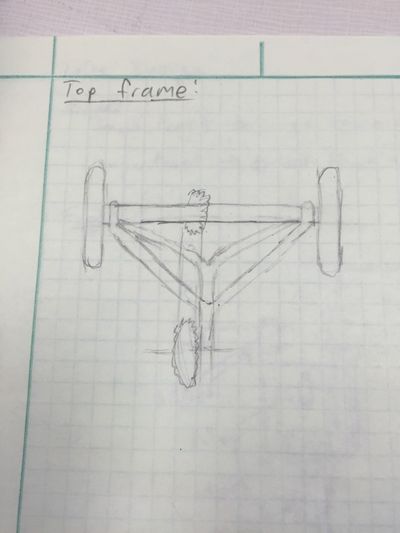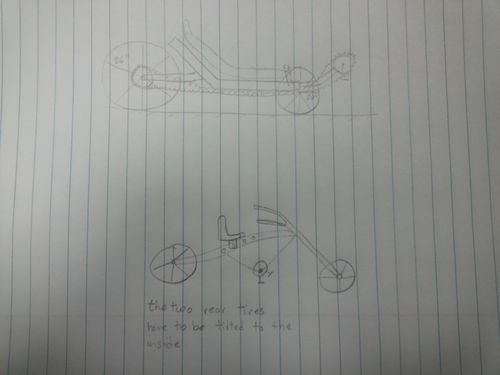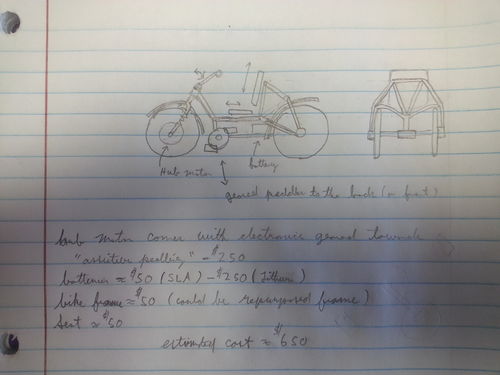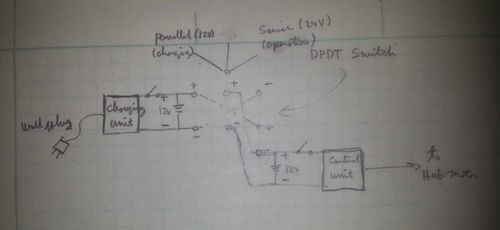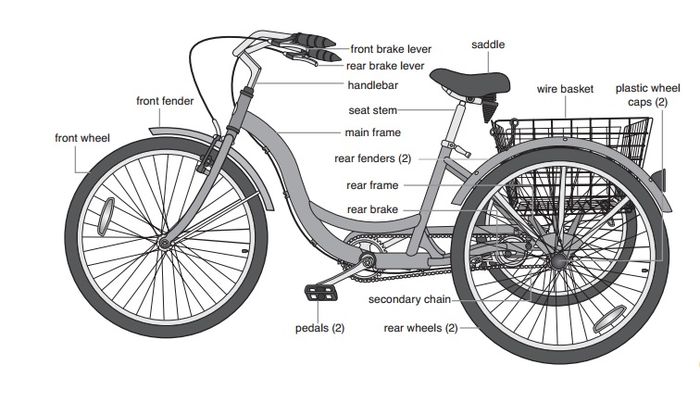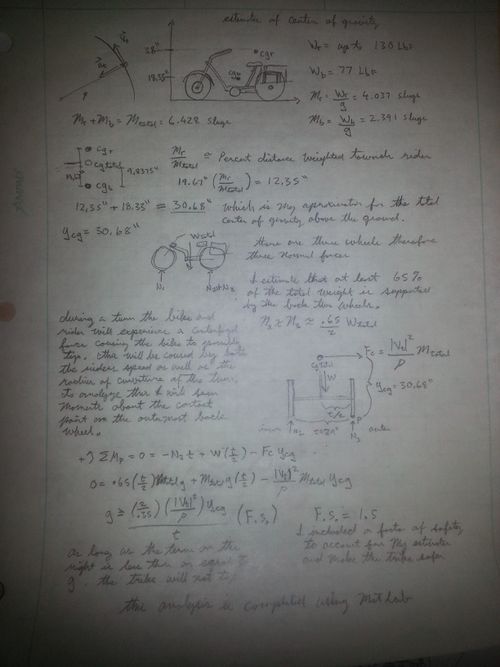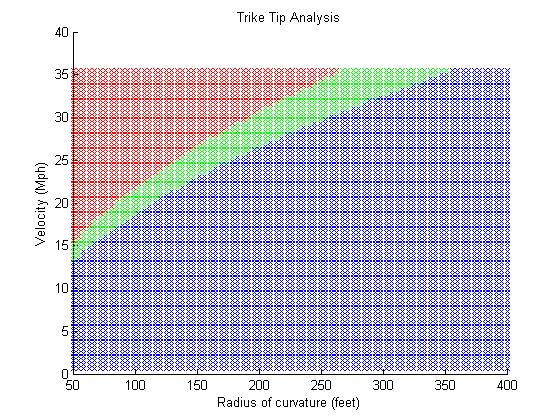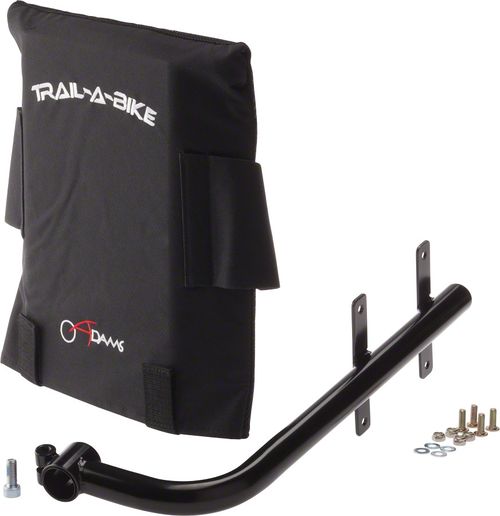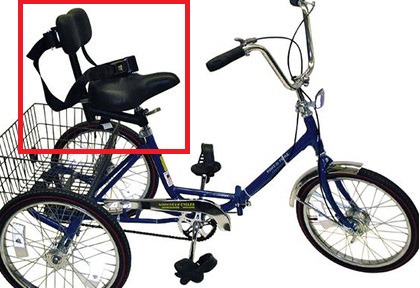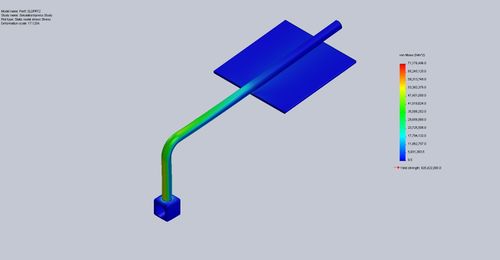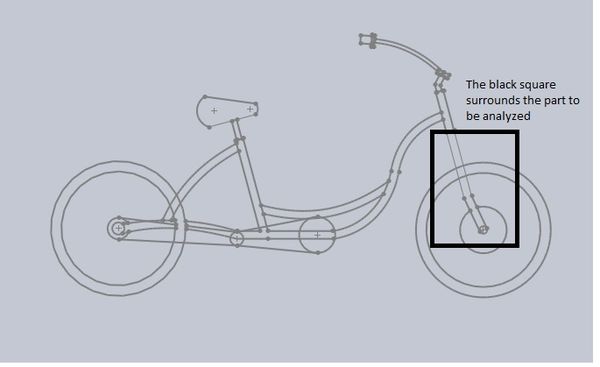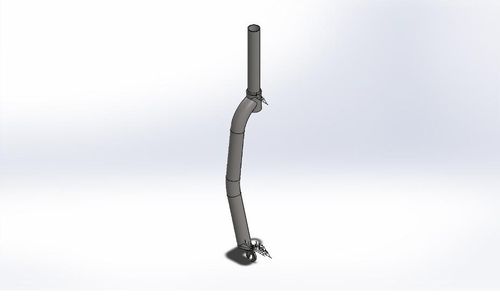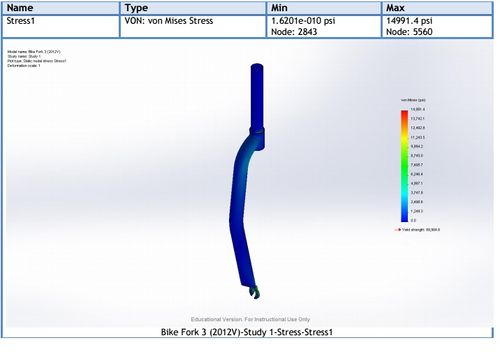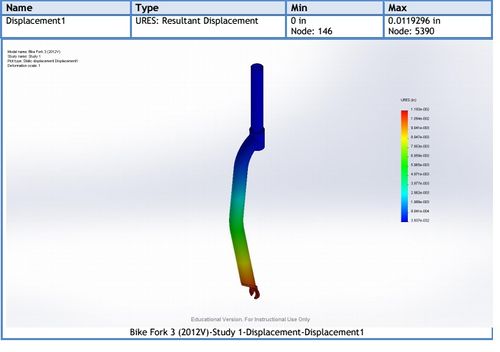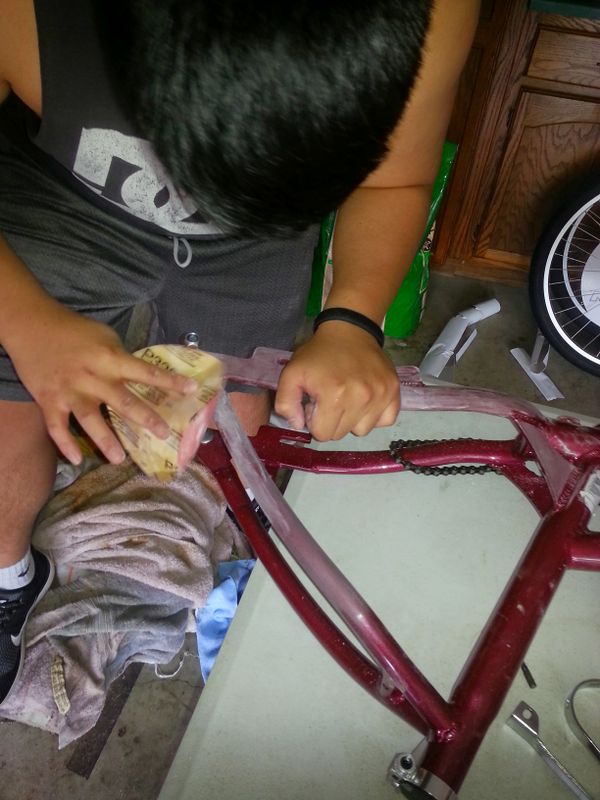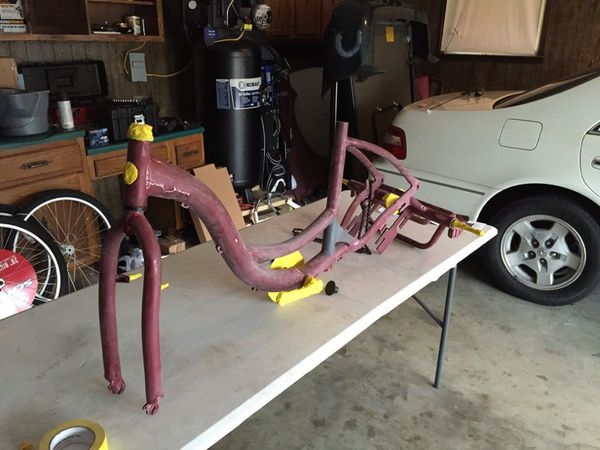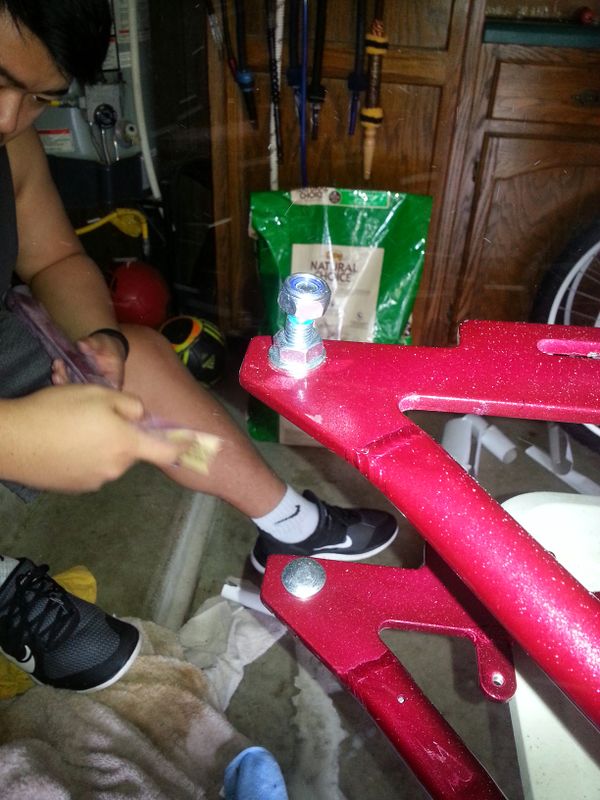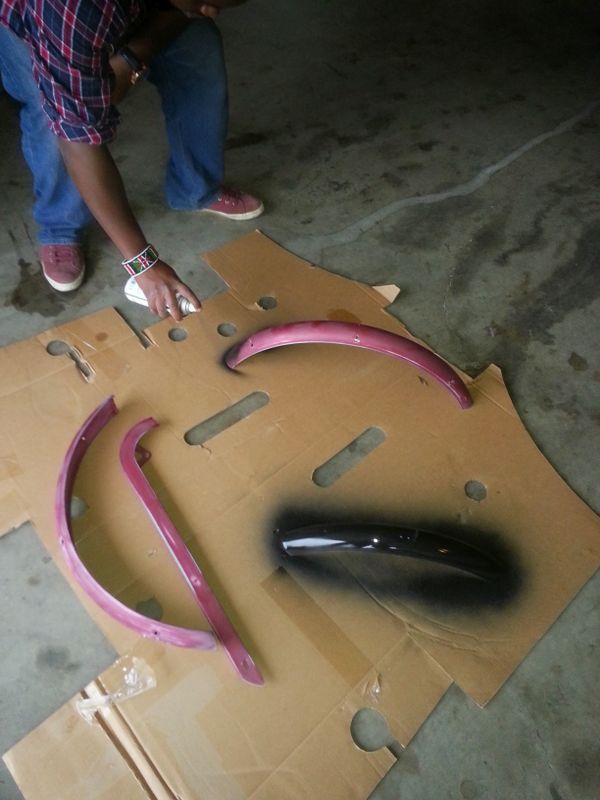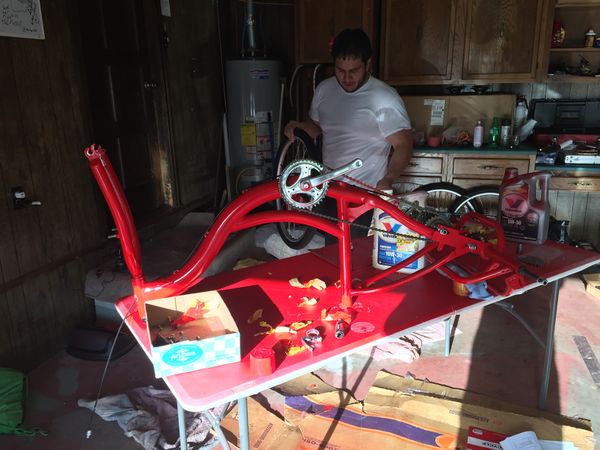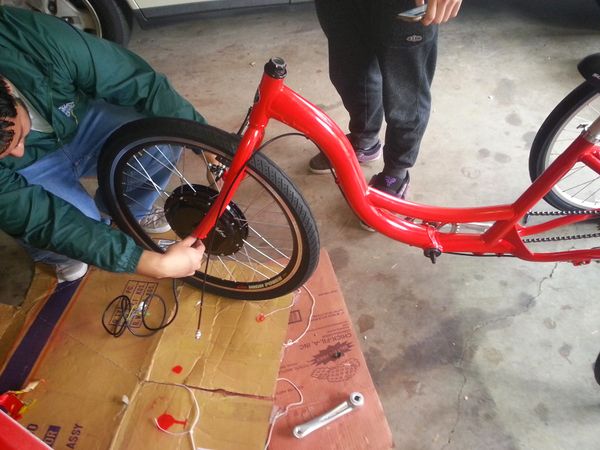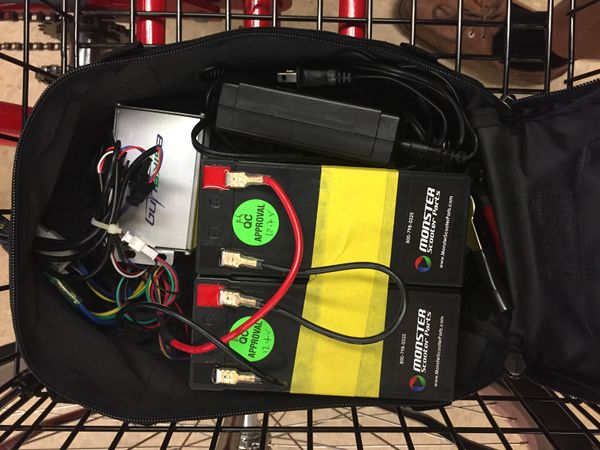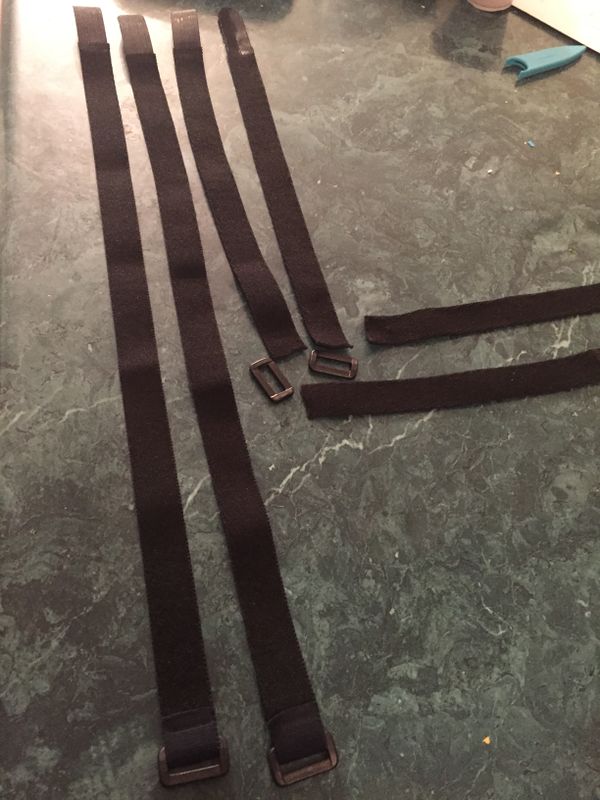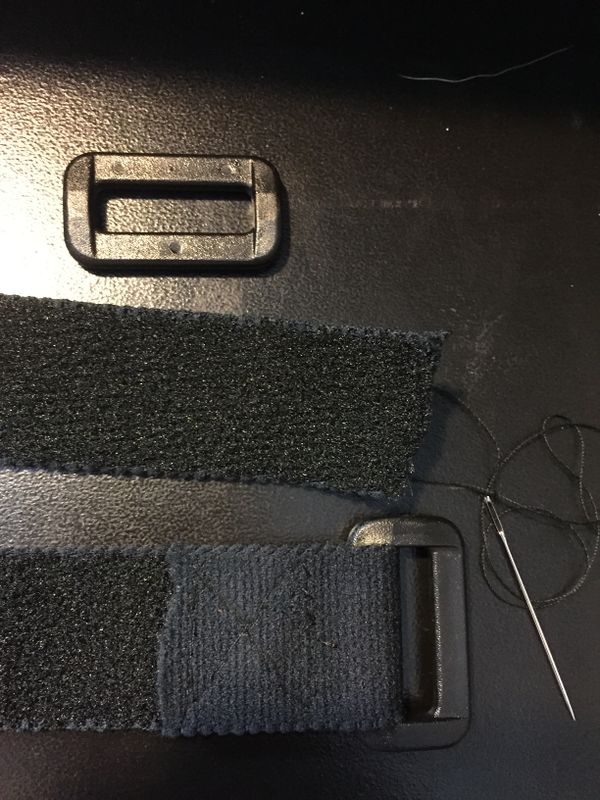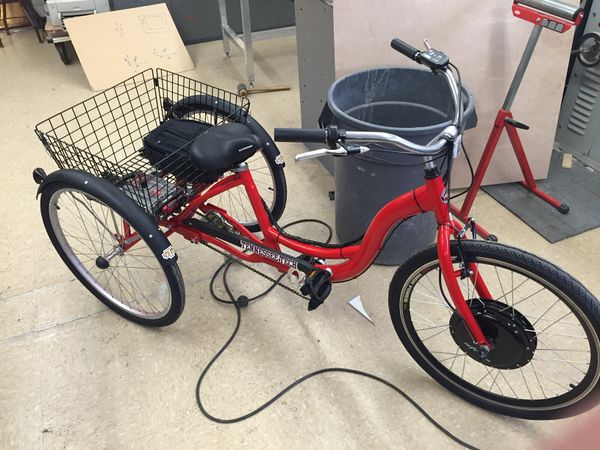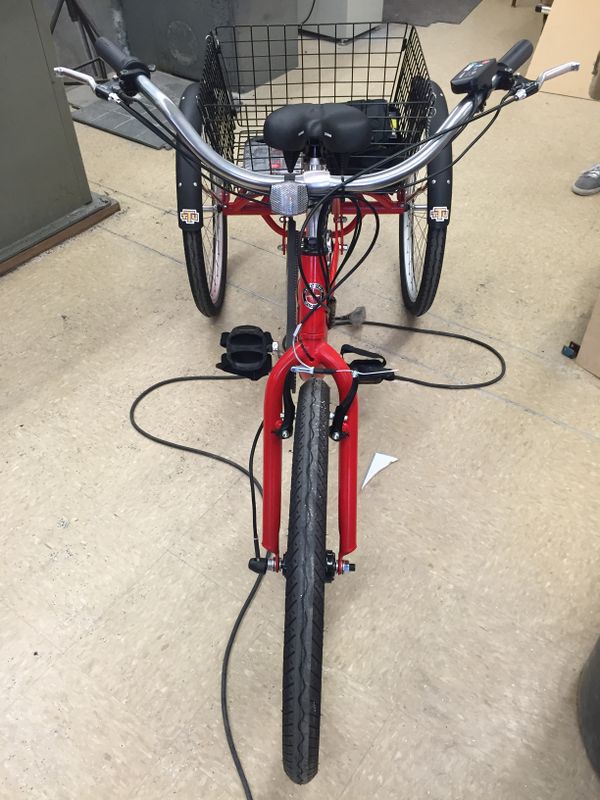Project 4 S15
Contents |
Abstract
Our client requires a bicycle that is subsequent to his exercise needs. We have developed a bicycle that is in conjuncture to his immediate as well as future needs. We have adhered to that by transforming the bicycle into a three wheeled mechanism (trike), as well as adding the feature of a motor to assist with the clients inept muscles.
Team members
- Left to Right:
- Johnny Scudder
- Jose Mejia
- Andrew Thammavongsa
- Carlos Garcia
- Greyson Moffatt
Problem Statement/overview of the need
This project is about providing an exercise bike that will be functional as well as enjoyable to our client. Our client is an 11 year old child with Autism who is unable to ride a regular bike due to: his weight, balance and coordination as well as muscle tone in both his legs and arms. We propose to provide a bike to encourage our client to use the bike and exercise.
Design Parameters
- The bike must be able to assist the passenger with balance: 3 wheeled design (trike)
- Must have an assistive mechanism to help the passenger peddle to a certain extent: assistive motor
- Adjustable to the specifications of the passenger over a long period of time: adjustable seat and handle bars
- Our client must enjoy riding the trike to encourage exercise and fitness: to be decided
User Information
- User Dimensions:
- Overall height = 52"
- From waist to bottom of of feet = 29"
- Length of arms (shoulder to wrist) = 17"
Conceptual Designs
Everyone in the group came up with their ideas and proposed a project design, as shown below. We gathered together and discussed everyone's design concepts. Then, we took parts from all the different concepts to create the best design that meets the parameters above.
Design Concept 1
Motor Assisted Trike:
- Light weight design to help the trikes portability
- Lower to ground making entry easier
- Frame can easily be adapted from an older bike frame
- Small motor for assistance
Design Concept 2
Three wheel motor assisted trike:
- Stable
- Safe
- Simple steering
- Pedal assist systems kits are ready and available
Design Concept 3
BMX Trike:
- Two wheels in front and one in back for stability
- A front suspension mirroring a cars front suspension for front wheel maneuverability
- A hub motor on the rear wheel making the bike generally electric powered
- An independent chain mechanism connected to a pulley system used solely for exercise
- Disk brakes in front wheels
Design Concept 4
Three wheel assistive pedaling design:
- Pulley system to assist with pedaling
- Adjustable joints to help with comfort
- Straps for pedals to secure feet to a certain extent
Design Concept 5
Chopper/Recumbent Trike
Recumbent:
- Lower center of gravity
- Easier to mount and dismount the trike and ride securely
- Easier to pedal
- Make the pedals adjustable from the frame of the bike
Chopper:
- Make the frame in a banana shape for an easily adjustable seat
- Two wheels in back and tilted outwards for stability and turning
Proposed Design Concept
Recumbent trike with pedal assist
Electronics:
Design Features
- Light weight design to help the trikes portability
- Frame can easily be adapted from an older bike frame
- Three wheel design is very stable
- Pedelec pedal assisted hub motor in either the front or the back
- Frame could be adapted from that of a used bike
- Adjustable seat and handle bars would help accommodate the future growth of our client
- Easier to mount and dismount the trike and ride securely
- Pedal assist systems kits are available for order and could help our client exercise
Cost estimate:
- Pedelec kit: $250
- Bike frame: $15~$30
- Batteries: $50~$250 (SLA vs. Lithium)
- Seat/frame modifications: $60
estimated total cost: $375~$590
Detailed Design
Our final design was based on the Schwinn tricycle with the 26" wheels, above.
- Tricycle Specifications:
- Frame Material
- Aluminum
- Speeds
- 1-speed
- Weight
- 72 lbs
- dimensions (L x W x H)
- 72" x 30" x 44"
- Frame Material
Analysis
Engineering analysis 1
Trike Tip Analysis
Matlab code:
%% Trike Analysis DOM Spring 2015
%
clc
clear
%% Parameters and constants
g = 32.2; %ft/s^2
t = 29/12; %ft
y_cg = 30.68/12; %ft
v = linspace(1,52,80); %ft/s (max @ 35mph)
p = linspace(100,400,80); %ft (max and min design radius refrenced from bike path planning codes)
fps_mph = .6818; %fps to mph conversion factor
f_s = 1.5; %factor of safety
color = ['b','g','r'];
c_index = 0;
%% Operations
data = size(p);
i=1;
for i=1:length(v)
n=1;
for n=1:length(p)
%i
%n
data(i,n) = ((2*f_s)*((v(i)^2)/p(n))*y_cg)/t;
data(i,n);
%pause
if data(i,n)<g
if data(i,n)/g<.75
c_index = 1;
else
c_index = 2;
end
else
c_index = 3;
end
scatter(p(n),v(i)*fps_mph,color(c_index),'x')
hold on
end
end
ylabel('Velocity (Mph)')
xlabel('Radius of curvature (feet)')
title('Trike Tip Analysis')
Graphical Analysis
blue area is safe
green area is within 75% of tip
red area is tipping
Engineering analysis 2
Analysis:
This Analysis was to find out where the majority of the stress would be applied, as well as whether the part would be able to adhere the force subjected on it.
Conclusions: 1) The von Mises Stress test proves that most of the stress was at the bent juncture.
2) Yes, the part did not fail when subjected to the force, due to the stress not being enough to cause fracture. This was proved via the Max von Mises Stress, which shows that the part is within the Factor of safety.
To read more please click on the link....
Analysis PDF
Engineering analysis 3
Expected Outcome:
For this analysis, we want determine whether the fork is strong enough to withstand the torque the electric motor will be outputting.
Assumptions:
There are basic assumptions. Most bicycles forks are made out of some type of steel. In this case, we used an alloy steel. The analysis was a simple static simulation, where the longer top tube was held fixed. The torque of the electric motor was placed at the bottom part of the fork, where the wheel would be mounted. In addition, we decided to use only one side of the fork.
Results - Stress & Displacement:
Verdict:
As expected, the tricycle's fork will be strong enough to withstand the torque outputted by the electric motor. The majority of the stress and displacement happen at the bottom of the forks, which is the piece that holds the electric motor. The maximum stress is about 15,000 psi and the maximum displacement is less the 1/64th of an inch. Most manufacturers account for all various types of forces applied to the forks, so here will be no further modifications needed.
Bill of Materials
| Quantity | Parts | Part Number | Cost (tax exempt) | Shipping |
|---|---|---|---|---|
| 1 | 24V 350W 26" FRONT REAR GEARED CONVERSION KIT | $190.00 | $0.00 | |
| 2 | Yuasa NP7-12 12V/7Ah VRLA SLA Battery with F2 Terminal | YUASA-NP7-12F2 | $39.98 | $13.90 |
| 1 | Battery Tender Junior 021-0123 - 12V 0.75A Battery Charger | SKU: 021-0123 | $26.99 | $6.95 |
| 1 | 26" Schwinn Meridian Adult Tricycle | Walmart #: 000743714 | $269.99 | $0.00 |
| 1 | Adams Trail A Bike Back Rest | BPC400865 | $45.00 | $13.24 |
| Total Cost | $606.05 |
Assembly Instructions
Fabrication Process
Preparing our frame for paint
When we received our trike frame, one of the bolts were bent in transit. So we found a bolt of the same dimensions and replaced it.
Painting trike
Trike assembly
Testing and implementation
We met with the family to test fit our client on the trike. Everything fit perfectly after some adjustments of the seat and the handle bars. Our client rode around on the trike for awhile, and we noticed that his feet kept slipping off of the pedals. So, the family requested that we put straps on the pedals to keep his feet in place while he ride the trike. So, we went to look for pedals with straps at a couple of local cycle shops in town. The only pedals we found were for cycle enthusiast and did not provide much support for your feet. We decided on purchasing velcro straps and slightly modifying them to fit our product.
Photos of Completed design
Of course we are proud to be apart of the engineering program at Tech. So, we had to put some Eagle pride on the trike!
Instructions for safe use
We provided the family with a user manual that we created. The manual includes: instructions for safe use, diagram of the trike, and a parts list stating where to find replacement parts if needed.
Project Summary, Reflection
We ran into some complication as far as choosing a design. At first we chose a recumbent trike designs, but we ran into some safety and cost efficient issues. So, we ended up going with our net best option, which was a regular trike design. We ran into some issues with finding/ordering parts within our cost range, but we improvised and everything ended up working out. Overall we had a great time building this trike for our client, and have learned a lot doing so. We are proud of our final product and stand behind it fully.
